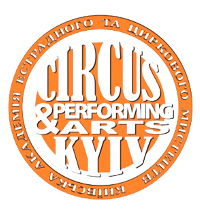TRENDS IN MUSEUM POLICY OF THE XXI CENTURY IN NORWAY
Abstract
Norwegian museum policy in the 21st century has clear trends that outline requirements from society and adequately reflect on them. Over the last twenty years, there has been a noticeable trend in the organization of new museums, the active construction of museum areas, the functioning of old premises, and the creation of museum associations. Museums are becoming more inscribed and included in the cultural landscape of the country. A good example is presented in four museums: the “MUST” Museum Association in Stavanger, the National Museum of Photography in Horten, the Western Telemark Museum, and the Faience Museum in Egersund. In those museums, the attempt was to describe the main trends in museum policy in 21st century Norway. The vector of museums development was defined to promote a national culture in a broad world context. This followed the specific changes in the museum’s collections, preservations, research, and presentations that are not losing relevance. Furthermore, in this case, the emphasis of the 21st century has changed relation towards the 19th and 20th centuries. Research and educational work, their popularization in the media space, organization of research exhibitions, and openness of museums to cultural and social dialogues came to the fore. Formulating the idea at the state level – “museum for everyone” – requires the museum to search for new tools to attract a diverse audience. Museums, as an active form of leisure, end up offering high aesthetic quality. Much attention is getting paid to the presentation of materials, with its interactive form of communication with a viewer, and it becomes a new norm of art appreciation. The museum, with its collection of objects, is gradually transformed in the presentation of ideas. The design of the exhibition space creates fascinating stories of entering and communicating with cultural objects. Technical and technological development achievements are implemented in the museum surrounding mainly to preserve exhibits and ensure that museum collections are open to all in a digital format. The level of equipment of local and regional museums increases their role as objects of concentration of history about the cultural landscape of each specific territory.
References
1. Лоренц Я., Сколник Л., Бергер К. Дизайн выставок: практическое руководство. Москва: АСТ, 2008. 256 с.
2. Норріс Л., Тісдейл Р. Креативність у музейній практиці. Київ: Музейний прості, 2017. 192 с.
3. Тобелем Ж-М. Нова епоха музеїв. Київ: Музейний простір, 2018. 320 с.
4. Яковець І. Художній музей ХХІ століття. Черкаси: Видавець Вовчок Ольга, 2016. 464 с.
5. En fotohistorie: Preus museum samling. Oslo: Press, 2015. 468 s.
6. Eriksen A. Museum. En kulturhistorie. Oslo: PaxForlag, 2009. 250 s.
7. Floor J., Næss J-R., Vinsrygg S. Museum og samfunn: Trenger vi museumspedagogikk? Stavanger, 1988. 98 s.
8. Gundersen T. H. Egersunds Fayancefabrik. Bergen: Molvik Grafisk, 2011. 336 s.
9. Kunstmuseum i Stavanger.
URL: http://stavangerkunstmuseum.no
10. Museum Stavanger Årbok 2018. 128 Årgang. Stavanger, 2019. 164 s.
11. MUST – Museum Stavanger. Programm 2016-2021. Stavanger.
12. Preus museum. URL: https://www.preusmuseum.no
13. Tin M. B. De første formene: Folkekunstens abstrakte formspråk. Oslo: Novus forlag, 2007. 325 s.
References:
1. Lorents, J., Skolnyk, L., Berher, K. (2008). Dyzain vystavok: praktycheskoe rukovodstvo [Exhibition Design: A Practical Guide]. Moskva: AST [in Russian]
2. Norris, L., Tisdeil, R. (2017). Kreatyvnist u muzeinii praktytsi. [Creativity in museum practice] Kyiv: Muzeinyi prosti [in Ukrainian]
3. Tobelem, J-M. (2018). Nova epokha muzeiv [New era of museums]. Kyiv: Muzeinyi prostir [in Ukrainian]
4. Yakovets, I. (2016). Khudozhnii muzei XXI stolittia [Art Museum of 21st century]. Cherkasy: Vydavets Vovchok Olha [in Ukrainian]
5. En fotohistorie: Preus museum samling (2015) [En fotohistorie: Preus museum samling] Oslo: Press [in Norwegian]
6. Eriksen, A. (2009). Museum. En kulturhistorie [Museum. A cultural history]. Oslo: Pax Forlag [in Norwegian]
7. Floor, J., Næss, J-R., Vinsrygg, S. (1988). Museum og samfunn: Trenger vi museumspedagogikk? [Museum and society: Do we need museum pedagogy?]. Stavanger [in Norwegian]
8. Gundersen, T. H. (2011). Egersunds Fayancefabrik. Bergen: Molvik Grafisk [in Norwegian]
9. Kunstmuseum i Stavanger. Available at: http://stavangerkunstmuseum.no [in English]
10. Museum Stavanger Årbok 2018. 128 Årgang. (2019). [Museum Stavanger Yearbook 2018]. Stavanger [in Norwegian]
11. MUST – Museum Stavanger. Programm 2016-2021. Stavanger [in Norwegian]
12. Preus museum. Available at: https://www.preusmuseum.no [in English]
13. Tin, M. B. (2007). De første formene: Folkekunstens abstrakte formspråk. [The first forms: The abstract design language of folk art]. Oslo: Novus forlag [in Norwegian]

 ISSN
ISSN  ISSN
ISSN 



